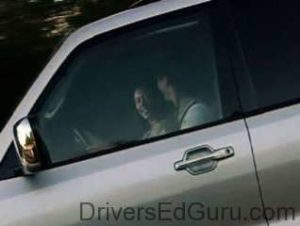Friends Don’t Let Friends Distract Them While Driving

If you’re a parent, the next two facts about distracted driving will probably terrify you:
- A State Farm Insurance Agency study found that just one passenger with a teenage driver doubled the risk of a fatal accident, and that the risk was five times higher when 2 or more teens rode along.
- The same study also found that alcohol-related teen auto fatalities are down, but the overall death toll hasn’t changed. Their explanation? Cell phones and text messaging have increased the occurrence of distracted driving.
The thought that your teen could be in a fatal accident because she was talking to friends or sending messages like “ur mom” to her friends is probably both frustrating and infuriating. Distracted driving is a serious issue that seems to be getting worse and worse. Luckily, a concerned and involved parent can make a difference in a teen’s actions (whether they admit it or not). Your involvement can reduce your teen’s distractions while driving.
First, you need to set ground rules. While many states have limitations on the passengers that can ride with a new driver, you may want to set additional restrictions to match your teen’s maturity and skill levels. It’s also important to reinforce the importance of wearing seatbelts, keeping hands and objects away from the driver, and following any limits you may wish to impose on where your teen may or may not drive with passengers.
That much is easy. The hard part is making sure that the rules are followed. The most important thing to remember is that when a teen driver tells someone else in the vehicle to calm down, many teens will hear those words as, “I’m not a good enough driver to deal with your distractions and the road. I suck.” What seems like a perfectly reasonable request to adults might seem like minor social suicide for a teen.
Obviously, not every teen is going to be confident enough to make a statement like that. You could provide the best, most supportive home-life imaginable and your teen still may not be able to stand up to a car full of their “cool” friends who want to blast the radio and lean out the windows.
That’s why it’s important to minimize the perceived risk in requesting fewer in-car distractions. When you’re talking to your teen, help him figure out ways to make the request seem less nerdy.
Saying something like, “Hey Scott, could you please turn down the radio? I’m having a hard time concentrating,” is going to be a lot more unnatural to your teen than a casual, “Hey asshole, turn that down. I can’t hear myself think in here.”
Yes, it may seem weird, encouraging your teen to be intentionally rude after so many years of teaching manners, but your concern should be with what works. If your teen’s too afraid to say anything, that’s much worse.
Another way for your teen to show his friends that he’s serious is to pull over to a safe place and refuse to go any further until the issue is fixed. There’s nothing wrong with leaving the offending passenger behind if they’re a danger to the others in the car. The threat alone is enough to correct most issues, though.
When coupled with a comment like, “Put your seatbelt on already. I don’t want to be cleaning your hair gel off my windshield the next time I slam my brakes,” it’s generally effective without seeming too wimpy.
While these are just a couple of examples, you can apply this approach to most in-car issues. By offering your teen some alternatives in dealing with problem passengers, you make it much more likely that he or she will be able to keep everyone in the vehicle safe.

